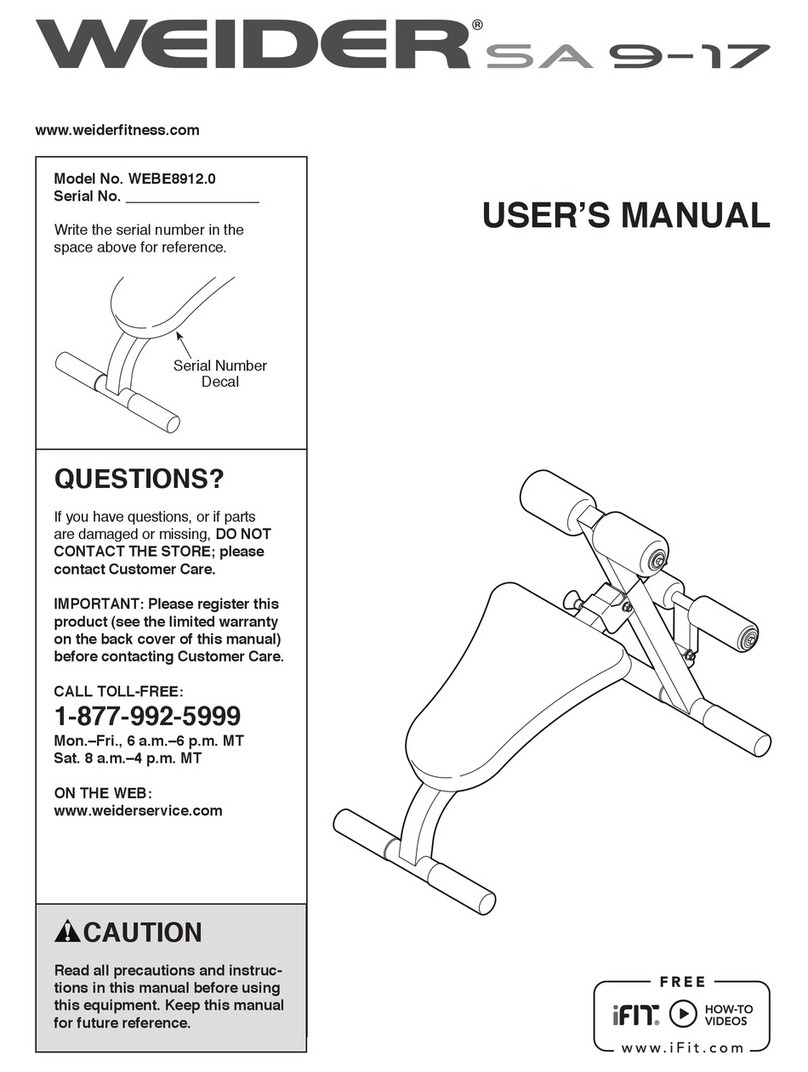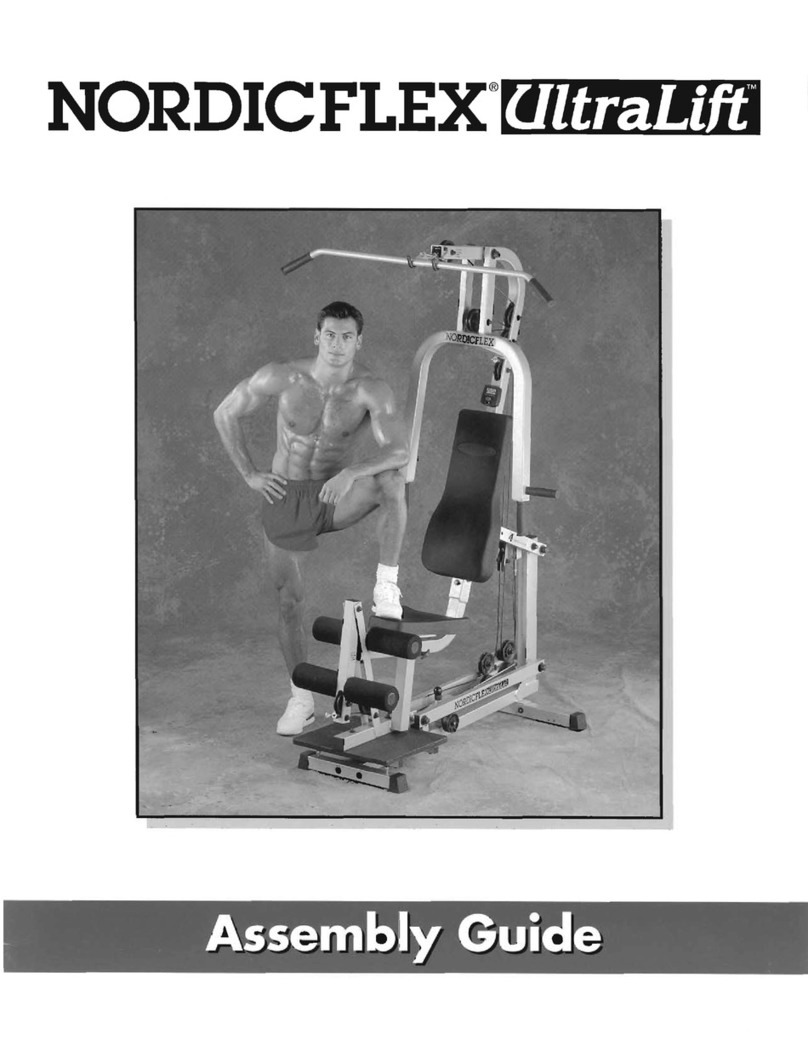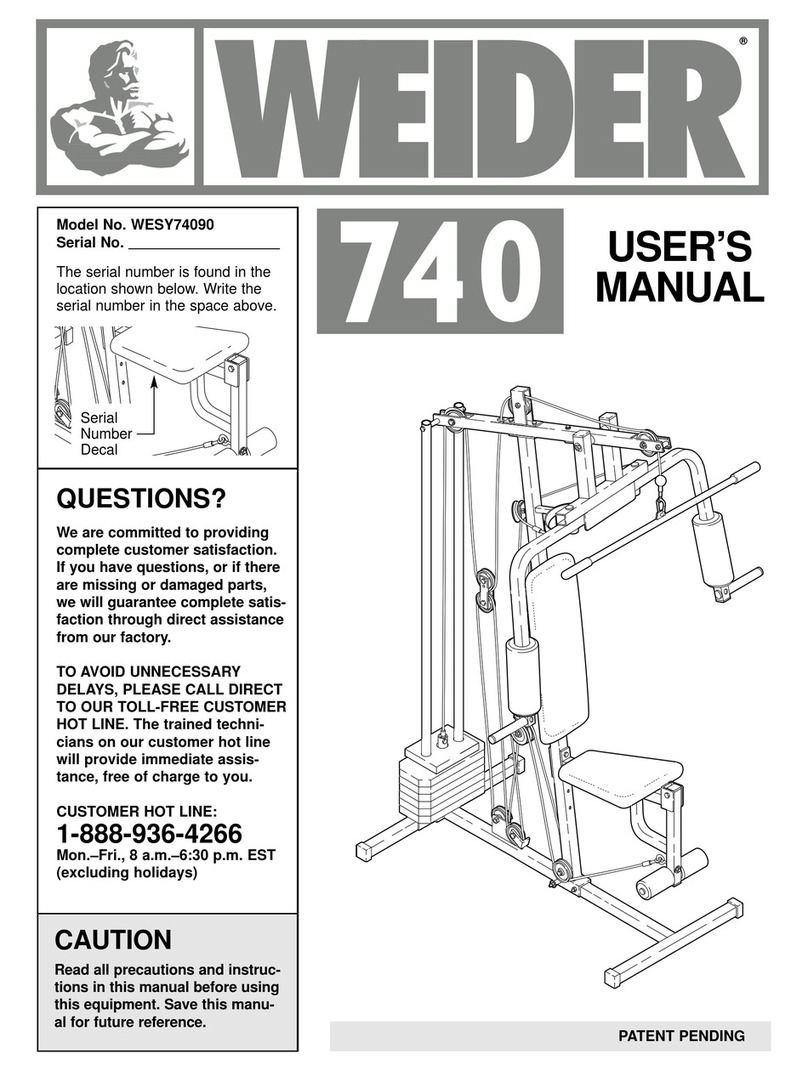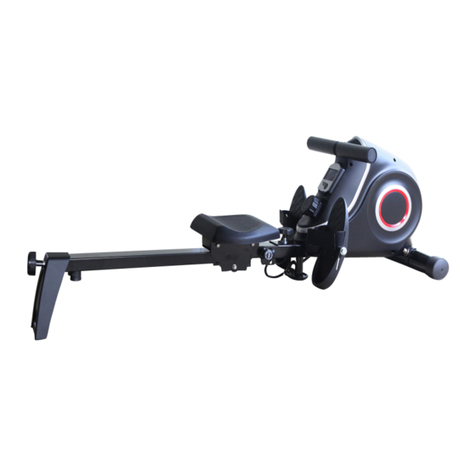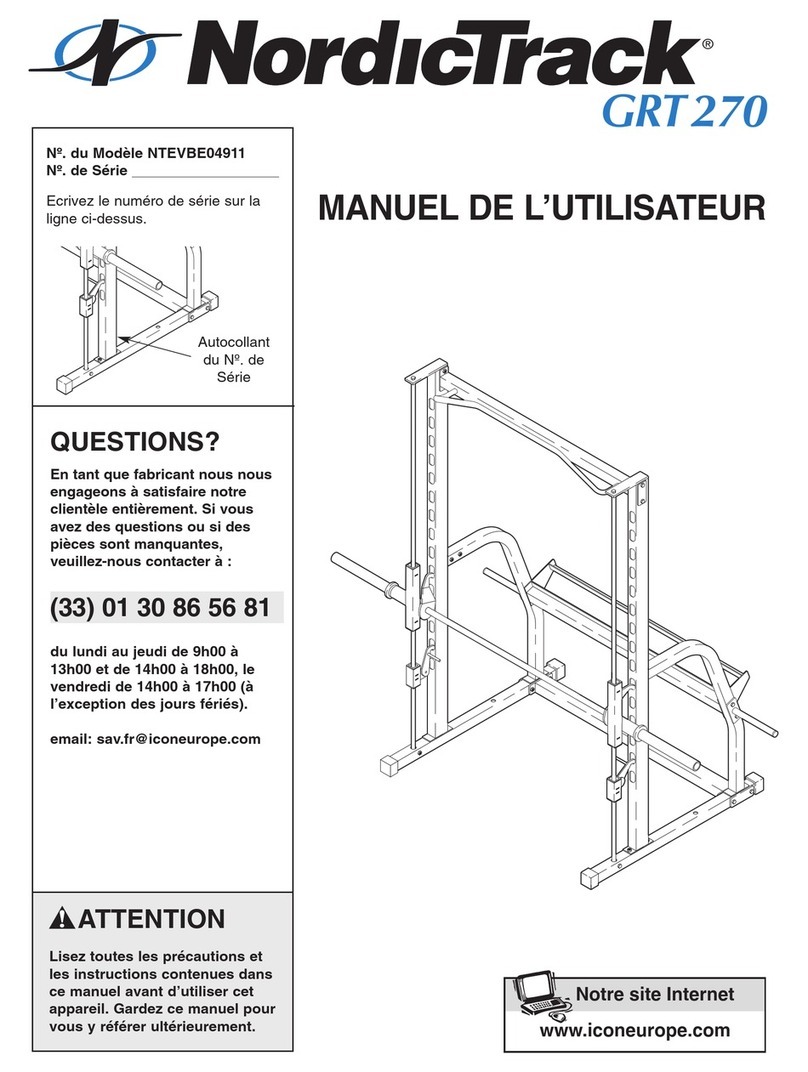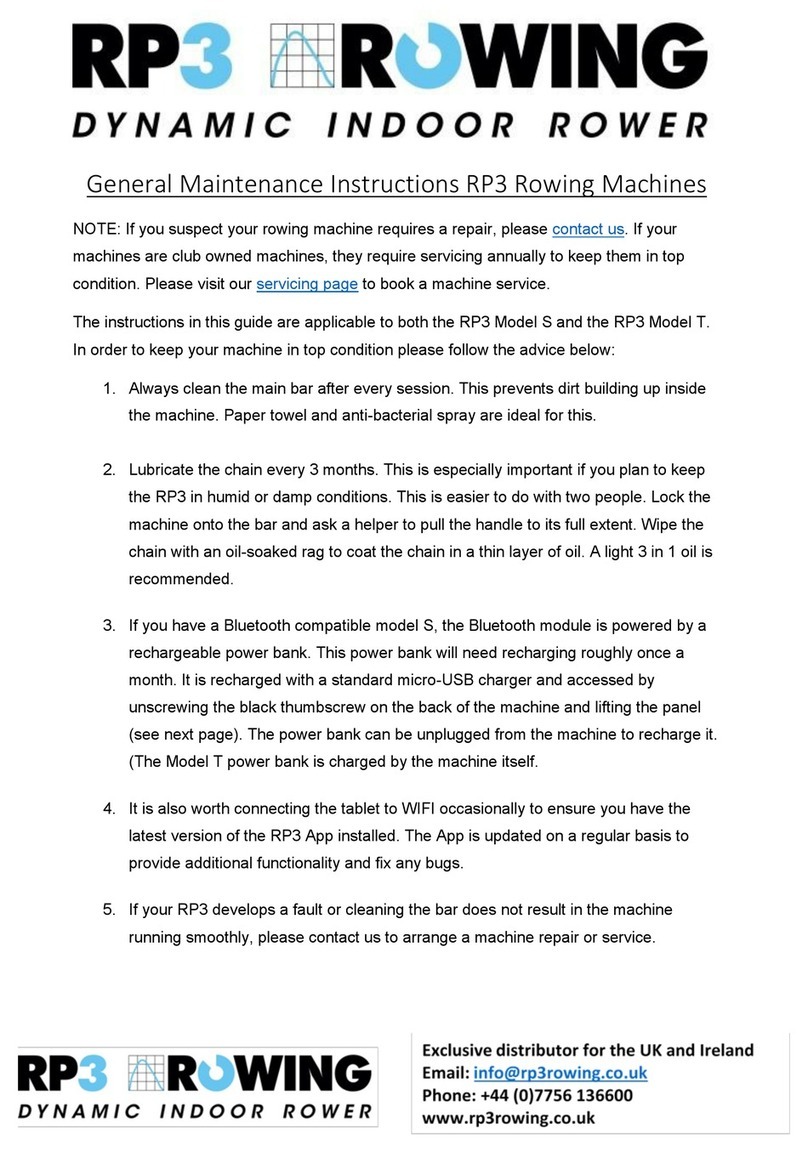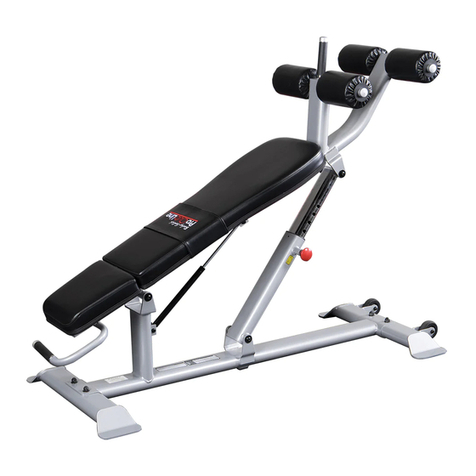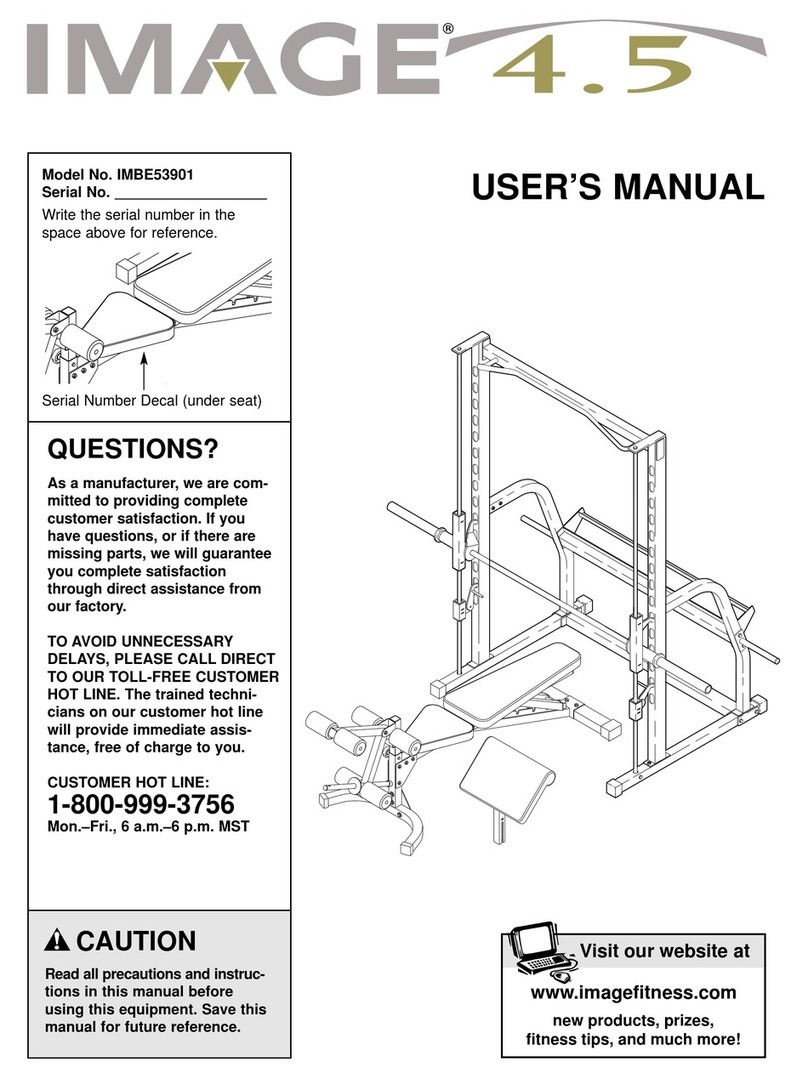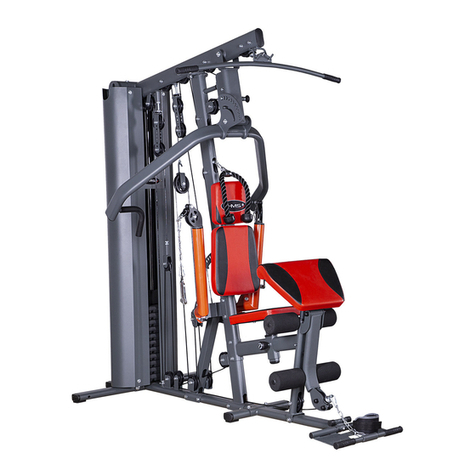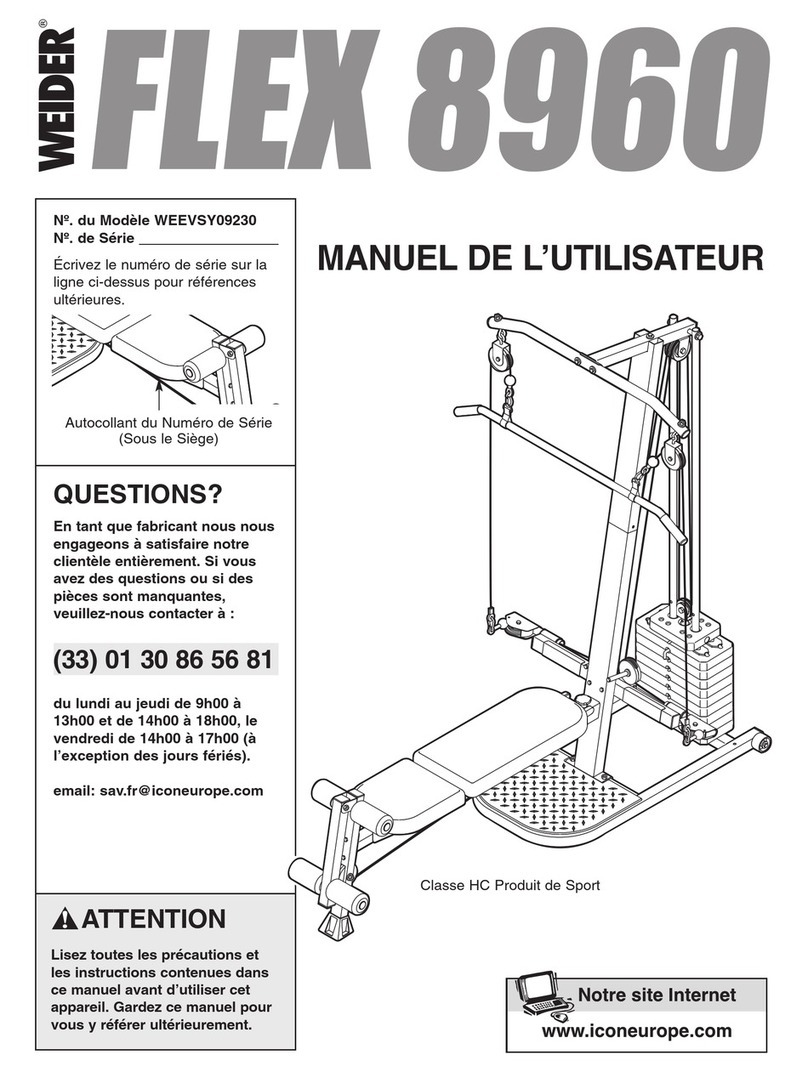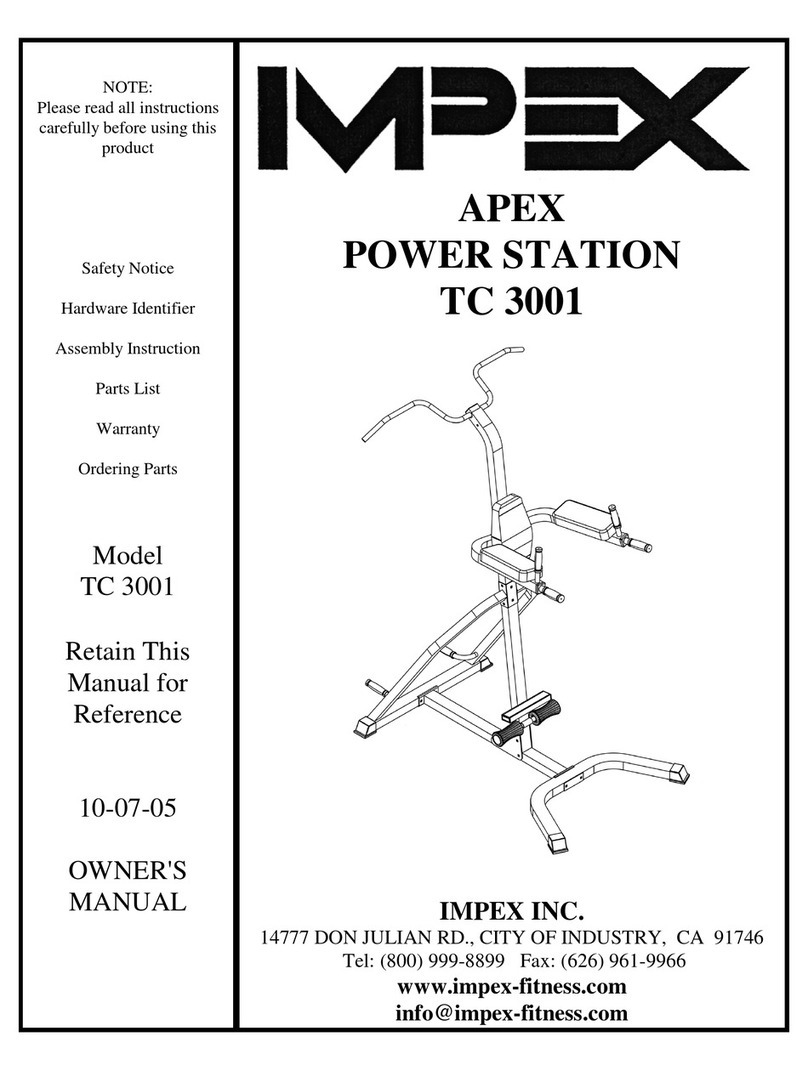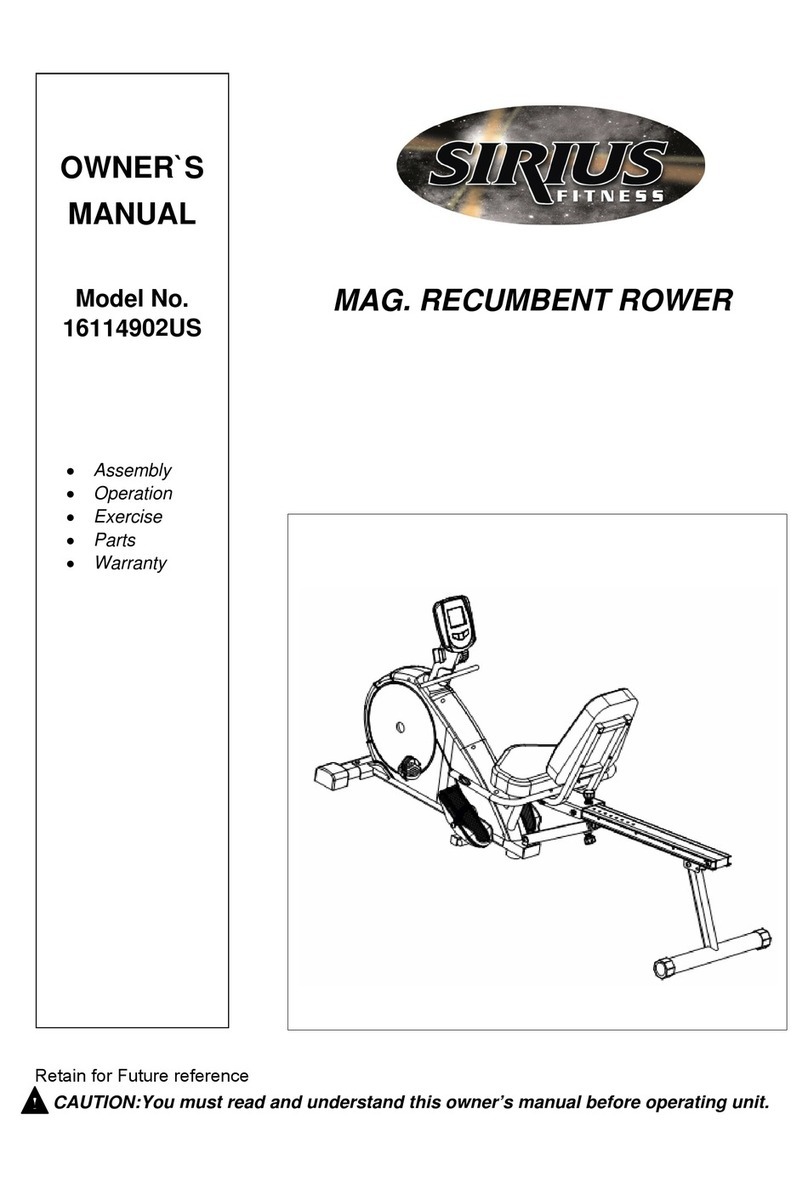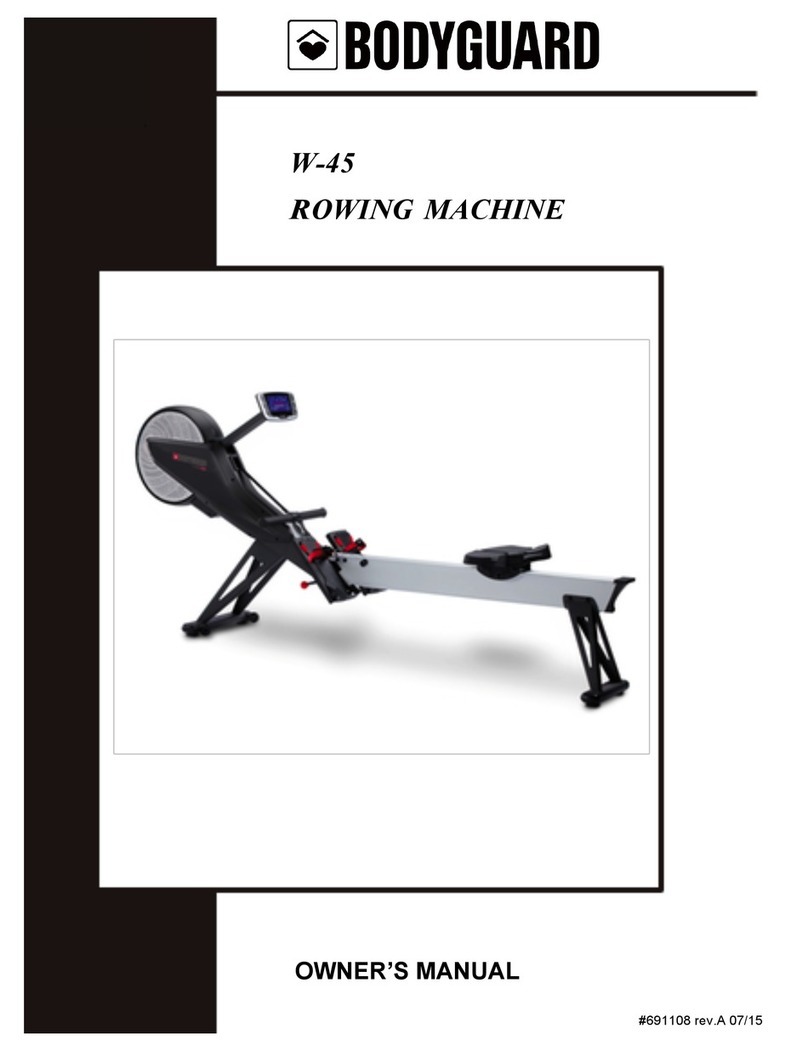TriStar AbToner User manual

Instruction Manual
AbToner™ is a trademark of Tristar Products, Inc.
©2006 Tristar Products, Inc.
All rights reserved worldwide
Made in China
U.S. Patent #5492520, U.S. Patent #5577987

2
Consult with your physician before starting this or any exercise or
conditioning program. This is especially important if you are over the
age of 35, have never exercised before, are pregnant or suffer from
any illness.
Safety always comes first. Read and follow this instruction guide
completely before using your AbToner. Keep this guide in a safe place
and make sure everyone who uses the AbToner also reads this guide.
Have a safe and enjoyable workout.
• If at any time you feel faint, light headed or dizzy,
please stop exercising immediately. You should also
stop if you experience undue stress, pressure or
pain at any time. See your doctor before continuing
to workout.
• Please keep all children and pets away from the
AbToner during use, as well as when the machine
is unattended.
• Make sure that all bolts are tight prior to each day’s
use. Periodic maintenance is required on all exercise
equipment in order for it to remain in good operating
condition.
• Use the machine on a flat, level surface. If you are
not using the AbToner on a carpeted surface, you
may want to put an exercise mat or towel beneath
the unit to cushion your back during the workout.
• Wear proper clothing. Wear workout gear that allows
free movement such as jogging and warm up suits,
shorts, T-shirts or other clothing that fits correctly.
• Always follow the correct exercising procedure for
the AbToner.
• Always choose the proper workout which best suits
your physical strength and flexibility level.
• Follow your doctor’s recommendations in developing
your own personal fitness program.
• Know your limits and train within them. Always use
common sense when exercising.
Safety Instructions

36
Parts List
Refer to this diagram and list below to identify all the components
of the AbToner.
Before assembling remove large parts and inspect for possible
damage. If you believe that you have a damaged part, return the unit
to original place of purchase.
Assembly Instructions
Refer to the drawing above.
Step 1: Attach the Head Rest (A) to the head rest bar,
use 2 screws (E) to tighten.
Step 2: Put the 2 Tube Bungs (D) on the Arms (C).
Step 3: Attach the Head Rest Bar (A), the Overhead Bar (B),
the Arms (C) together using 1/2” screws (G).
(Please refer to the above drawing)
FULL BODY STRETCH:
Lie with your back on the floor and your hands stretched out behind your
head. Try to stretch as far as possible and hold the position for
20 seconds. Release, relax and stretch again.
KNEE TO CHEST:
Lie with your back on the floor. Bring one knee in to your chest by
grasping with your hands in the crease of your leg beneath the knee. Do
not lift your buttocks off the floor to get your knee closer to your chest.
Do not grasp the top outside of your knees since this adds stress to your
knee joint. Remember to stretch both legs.
OBLIQUE STRETCH:
Lie with your back on the floor. Bring your knees up, keeping your feet
flat on the floor hip width apart. Drop your knees to one side and raise
your arms overhead while you position them on the floor on the opposite
side of your knees. Hold the position. Remember to keep both shoulder
blades flat on the floor. If you raise the blades, you lose the stretch.
SHOULDER STRETCH:
Sit up straight on the floor with your back straight, abs tight, chest lifted
and shoulders back. Cross your legs “Indian style”. Reach one arm
across your body and with your other arm pull the arm nearest
to you into your chest. Do not pull at the elbow joint. Repeat with
the other arm.
SHOULDER SHRUGS:
Shrug both shoulders in a circular motion - up, back, down and around.
Do this at least 8 times, then reverse the direction and repeat another 8
times.
TRICEPS STRETCH:
Raise both arms above your head. Bend one arm at the elbow and place
the palm of your hand against your back. With your remaining free hand,
gently grasp your elbow and move your bent arm back until you feel a
stretch. Hold. Repeat with the other arm.
CAT STRETCH:
Get down on your hands and knees with your back straight and abs
tight. Raise your back into an arch position by pressing your back
up toward the ceiling. Next, relax your back, returning to your original
position. Move gently and slowly with control and hold each position for
at least 15 seconds.
Cool Down Exercises
Parts List Quantity Part#Description
1 A
Head Rest &
Head Rest Bar
1 F
8 G
1/4” x 1/2”
Screw (M6x12)
2 E
1/4” x 1 1/2”
Screw (M6x38)
2 D
Tube Bungs
2 C
Arm
1 B
Overhead Bar
5/32” x 2 3/4”
Allen Wrench
(
O 6x120 )

4 5
Warm Up Exercises
Important: If at any time you feel faint, light headed or dizzy, please
stop exercising immediately. You should also stop if you experience
undue stress, pressure or pain at any time. See your doctor before
continuing to workout.
A proper warm-up enhances your body’s vasodilatation (relaxation
of the peripheral blood vessels) so that more blood and more oxygen is
delivered to your muscles. It also helps oxygen in the blood to interact
with hemoglobin more easily, improves coordination, reduces heart
irregularities and allows you to burn fat more easily.
Also, since warm muscles are more elastic, they are less susceptible to
injury. Warm muscles also produce a fluid like stretch that allows
for a greater range of motion, while cold muscles can’t absorb shock
or impact well.
Perhaps most importantly, warm muscles burn fat more readily than
cold muscles. That’s because while you’re exercising fatty acids are
released into the bloodstream. If you start your exercise at full speed,
the cold muscles won’t be able to use up the fatty acids and they end
up lining the walls of your arteries.
The most common way to warm up your muscles is by walking,
riding a bike, marching in place or doing knee lifts with various arm
movements for three to five minutes. The best way to know when your
body is warmed up and best prepared for exercise is when you begin
to perspire lightly.
Exercises
1. Basic Crunch
Adopt the basic position and simply crunch
forward while keeping your back on the floor
and your head on the headrest. We suggest
you hold your crunch position, then slowly curl
down and repeat the sequence. Approximately
12-15 repetitions.
2. Reverse Crunch
Keeping the body in the same position, the
only part of the body leaving contact with the
floor will be your feet, legs and buttocks. Your
back still remains flat on the floor. Breathe
out as you slowly pull your knees toward your
chest and breathe in as you slowly return to the
starting position. Perform this exercise in a slow
controlled manner. As you bring your knees
toward your chest, concentrate on using your abdominal muscles not
your legs. Approximately 12-15 repetitions.
3. Total Crunch
This exercise is a combination of the basic
crunch and reverse crunch. While performing
a basic crunch, bring your knees toward
your chest while keeping your back flat on
the floor and your head on the headrest.
Return to starting position and repeat again.
Approximately 12-15 repetitions.
4. Oblique Crunch
While keeping your knees together and bent,
rotate them toward the right side. Legs should
be as close to the floor as possible without any
discomfort. From this position, perform a basic
crunch with your head on the headrest, your
back will be slightly off the floor. We suggest
12 repetitions. Then rotate your legs toward
the other side following the same routine to
work both sides of the obliques. Approximately
12-15 repetitions. To make sure the muscles
in the oblique area are developed evenly the
number of repetitions must be the same on
both sides.
5. Advanced Bicycling
The hands in the basic position, your back
remaining flat on the floor and your head on
the headrest. This exercise is not for beginners.
Start with legs straight in front, flat on the
floor. As you crunch up bring the right knee in
a relaxed bent position in toward your chest
(exhaling as you do so) as you roll down bring
the left knee in a relaxed position toward your
chest. Your legs should be moving as if you
are riding a bicycle. This exercise is quite
demanding on the abdominal area, so you may want to start with 10
repetitions and move on to 12 after the first week and finally 15 on third
week.
6. Advanced Leg Lifts
Start with your head on the headrest, back flat on the floor and hands
in basic position. Slowly lift your legs keeping your knees relaxed and
with a slight bend, lift toward your chest and shoulders while keeping
your back firmly on the floor at all times. Then proceed to lower your
legs back back down to the floor. While doing this exercise you must
concentrate on lifting your legs with your abdominal muscles not your
back or legs. Lifting with your abdominals really isolates those muscles.
We suggest you start with 10 repetitions and move on to 12 after the
first week and finally 15 on the third week.
Exercises cont.
Table of contents

